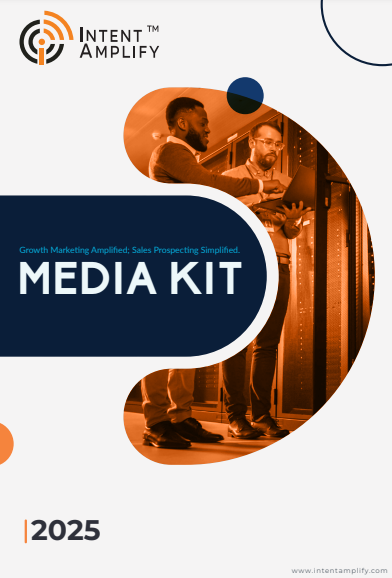
First-Party Data Strategies in a Cookie-less Future: B2B Best Practices
- Last updated on: October 18, 2025
The digital marketing landscape is shifting. Third-party cookies, once the backbone of audience targeting, are disappearing. Privacy regulations like GDPR and CCPA, combined with browser restrictions, are forcing B2B marketers to rethink how they collect and use data.
In this new reality, first-party data strategies are no longer optional. Actually, they’re essential. Companies that can harness their own customer data effectively will gain a competitive edge in targeting, personalization, and measurement.
Why First-Party Data Matters
First-party data is information collected directly from your audience: website interactions, form submissions, CRM entries, and purchase history. Unlike third-party data, it’s accurate, reliable, and fully compliant with privacy laws.
For B2B marketers, this means better insight into buyer behavior, higher-quality leads, and more personalized campaigns. According to a 2024 Salesforce report, companies leveraging first-party data see up to 25% higher conversion rates compared to those relying heavily on third-party sources.
Core Principles for Effective First-Party Data Strategies
1. Collect Data Transparently
Transparency builds trust and encourages prospects to engage willingly. Clearly explain how data will be used. Provide simple opt-in options and privacy statements. When users understand your intent, they feel safe sharing information. Explicit consent strengthens credibility and demonstrates your commitment to ethical marketing practices.
2. Centralize and Clean Your Data
Integrate all first-party data into a unified system like CRM or CDP. Remove duplicates and inconsistencies to ensure accuracy. Centralized data gives marketing teams a complete view of prospects and customers. Clean records improve segmentation, reduce errors, and make targeting far more effective.
3. Segment for Personalization
Divide your audience based on behavior, preferences, and engagement patterns. For instance, prospects downloading an AI whitepaper can receive related content suggestions. Personalized messaging increases relevance and nurtures leads naturally. Segmentation ensures campaigns resonate with each buyer group, improving response rates.
4. Leverage Predictive Analytics
Use first-party data to forecast which leads are most likely to convert. Predictive models identify engagement patterns, buying intent, and churn risk. This allows sales and marketing teams to prioritize high-value prospects. AI-powered insights help teams act strategically, saving time while boosting campaign effectiveness.
5. Prioritize Privacy and Compliance
Always follow GDPR, CCPA, and other regulations while collecting or storing data. Ensure security and transparency to maintain user trust. Compliance prevents fines and protects brand reputation. Treating data responsibly demonstrates your company’s reliability in a privacy-conscious market.
Implementing First-Party Data Strategies in B2B
B2B marketers must focus on collecting first-party data directly from prospects. Start by optimizing website forms. Keep them simple, relevant, and clear about why the data is needed. Avoid unnecessary fields that reduce completion rates.
Next, integrate all data into a single system, like a CRM or customer data platform (CDP). Track interactions across touchpoints: website visits, downloads, webinar attendance, and email engagement. Centralized data provides a complete view of prospects and customers. It allows marketing teams to segment audiences accurately and create timely campaigns. Monitoring content engagement is critical. Identify which blogs, guides, or case studies attract attention. Analyze reader behavior to guide personalized follow-up content. Event tracking, heatmaps, and click data give actionable insights into prospect preferences.
Over time, these efforts scale into robust programs. First-party data fuels marketing automation workflows, enables account-based marketing (ABM), and supports personalized campaigns. AI-powered analytics further enhance lead scoring, engagement prediction, and campaign optimization. The key is quality, not quantity. Collect clean, structured, and relevant data that drives decisions. Avoid collecting large volumes of unnecessary information. Accurate first-party data improves targeting, strengthens buyer trust, and helps B2B brands remain compliant in a cookie-less world. By acting strategically, marketers can ensure campaigns are both effective and privacy-conscious, creating long-term value and measurable ROI.
Conclusion
The end of third-party cookies is an opportunity. B2B marketers who prioritize first-party data strategies will gain stronger targeting, deeper insights, and more effective campaigns. By collecting, centralizing, and activating your own data while respecting privacy, you can stay ahead in a cookie-less world and deliver meaningful results to prospects and customers alike.
FAQs
1. What counts as first-party data?
Data collected directly from your audience, such as website visits, form submissions, and CRM interactions.
2. Why is first-party data critical in B2B marketing?
It’s accurate, privacy-compliant, and enables personalized targeting for higher conversions.
3. How can B2B marketers collect data transparently?
Use clear consent forms, explain data usage, and provide opt-in options.
4. Can predictive analytics work with first-party data?
Yes, it can forecast engagement, lead quality, and churn risk, improving campaign effectiveness.
5. How does first-party data replace third-party cookies?
It provides accurate behavioral insights, enabling targeting and personalization without relying on external tracking.



